Tres Leches Cake: A Recipe of Empathy - No. 341
This cool, creamy classic brings joy + Memorial Day recipe links
YOU MAY HAVE SEEN VIDEOS of road blocks in Nashville or in your own communities where law enforcement and Immigration and Customs Enforcement (ICE) are pulling people from vehicles and indiscriminately arresting undocumented citizens.
They may be searching for criminals, but they’re also arresting people who clean your house, mow your lawn, cook at the nearby restaurant, and wash the dishes. You’ve stood in line with them at Walmart and seen them at your children’s schools.
Many of those arrested support family members back home and came here to escape violence and poverty. For $5 a hour, many will labor in the summer heat and pick peaches and watermelon for our summer salads. And they pay taxes, too.
My own paternal ancestors came from southeastern Ireland in 1784. They emigrated through Philadelphia to Virginia to Tennessee voluntarily. Some died en route, others once they got here. My great-great-great grandfather operated a grist mill west of Nashville, and according to my father’s records, ‘’One day he started to the mill with a load of corn but was never seen again.’’
The Irish also came to the South to build railroads in the 1880s, which in my Southern baking book I say linked small towns like a mother’s strand of pearls. The Irish left behind recipes for soda bread and white potato pie, and they likely had something to do with the mountain whiskey that turned corn into an economy.
To my father’s knowledge, our Irish ancestors weren’t Catholic, but their family in Ireland might have been. Giving up your religion was something Catholics and Jews were willing to do to assimilate in a Protestant America.
I can’t speak to the racial prejudice other cultures have experienced in America. And it’s dizzying to try and keep up with all the news stories and court rulings surrounding the immigration policy the current administration promised on the campaign trail.
But just because immigration is complicated doesn’t mean we forget we are a nation built on it.
What is your family’s story?

"Give me your tired, your poor,
Your huddled masses yearning to breathe free,
The wretched refuse of your teeming shore.
Send these, the homeless, tempest-tost to me,
I lift my lamp beside the golden door!" - Emma Lazarus, Nov. 2, 1883
In 1883, a prolific Jewish writer named Emma Lazarus wrote a sonnet called ‘’The New Colossus’’ after she was persuaded by friends to enter it in an auction to raise money for the pedestal on which the Statue of Liberty would rest.
It was a poignant time for her words, says Walt Hunter in the January 2018 issue of The Atlantic. The year before her poem was read the Chinese Exclusion Act became the first federal law limiting immigration from a particular group. ‘’Though set to last for 10 years, various extensions and additions made the law permanent until 1943,’’ he says.
The year after the poem, European countries met in Berlin to divide the African continent into colonies. “The New Colossus” speaks to U.S. immigration policy as well as European colonialism. It speaks of rights and liberties, and woven into her words is a plea to not be silent, Hunter adds. ‘’Emma Lazarus was telling her peers that silence could not be accepted.’’
Tres Leches Cake: Something new for Memorial Day barbecues
Long before the Tres Leches Cake made its way to Pittsburgh, Portland, or Nashville, it was entrenched in Texas.
As Austin food writer MM Pack said in a 2004 Austin Chronicle column, it is "the new tiramisu of the millennium." Named for the syrup of three milks—whole milk, evaporated milk, and sweetened condensed milk— that is spooned onto a baked butter or sponge cake, tres leches or pastel de tres leches has been a fixture in Mexican, Nicaraguan, and Cuban kitchens for generations.
It originated in Europe where old Portuguese and Spanish desserts were often sponge cake soaked in egg cream. In the 1940s, Nestle opened an evaporated milk manufacturing plant in Mexico, and a recipe for this cake was on the label of those cans. No doubt that the popularity of tres leches in America has much to do with our country's increasing Hispanic population.
This dessert can be found today on restaurant menus around the world, and to me, it is a reminder that immigrant cultures not only influence us but become a part of us.
I order tres leches every time I find it on a menu because the nuances are intriguing, and for my weary tastebuds it’s like plunging into a refreshing pool. My favorites so far are from Fonda San Miguel in Austin, Texas, where it’s layered with fresh mango, and in Jacksonville, Florida, at 13 Gypsies where it’s served in a big cold square—unadorned and gorgeous.
At home, I’ve made tres leches from scratch and with a cake mix (photographed above from my 2017 book, What Can I Bring), and either way, it’s the most glorious cake for summer entertaining.
But after all these years of baking it in a sheet pan, and not having a lot of clearance at the top of the pan, slowly spooning over the milk syrups until they settle in, I finally figured out the secret: If you bake the cake in a springform (cheesecake) pan, let it cool in the pan, poke holes in the top, place the springform on a rimmed sheet pan that will fit in the fridge, and then pour all the milk syrup over the top of the cake in the pan at one time, it will soak into the cake on its own.
You don’t have to stand over it like some overbearing mother. Gently drape the top of the pan with plastic wrap, and place it in the fridge and when the syrup is all soaked in you can slather it with whipped cream on the top and sides, like the photo, and add loads of berries for garnish.
At its simplest, tres leches repurposes stale cake. At its grandest, it makes a statement.
Memorial Day was originally called Decoration Day and came from the tradition of decorating graves with flowers, wreaths and flags. It originated after the Civil War as a way to recognize soldiers who perished, and after World War I developed into a national event to remember those who have died in service to our country. In 1971, Congress passed the Uniform Monday Holiday Act and established Memorial Day on May’s last Monday.
My parents were patriotic people and raised my sisters and me to respect the flag and others. We were taught to hold our right hand over our heart when we said the Pledge of Allegiance and when we sang The Star Spangled Banner. We were told to be kind to newcomers, especially those struggling to make a living.
That’s why news of immigration raids and treating our Canadian and Mexican neighbors so dismally is unsettling to me. Why can’t we just care for people? Aren’t there enough jobs in America for everyone? A myriad cultures have been woven into our fabric.
This Memorial Day weekend, I’m harvesting the last of the peas from my garden. I’ve got a stack of books by my bedside and haven’t cracked a one. If it rains, I’m ready. And when it comes to the holiday meal, I want barbecue and cake. I’m not hungry for any more anger or hatred coming out of Washington or on my Nashville streets. Just make me a nice Tres Leches cake and serve it with extra empathy, please.
- xo, Anne
P.S. The Belonging Fund has been started by the Community Foundation of Middle Tennessee (CFMT). Believing no family should face a crisis alone, the fund donates 100 percent to immigrant families for housing, food, and essentials. "Belonging is more than a feeling — it's a sign of safety, stability, and community," said Hal Cato, CEO of CFMT.
What are you cooking for Memorial Day?
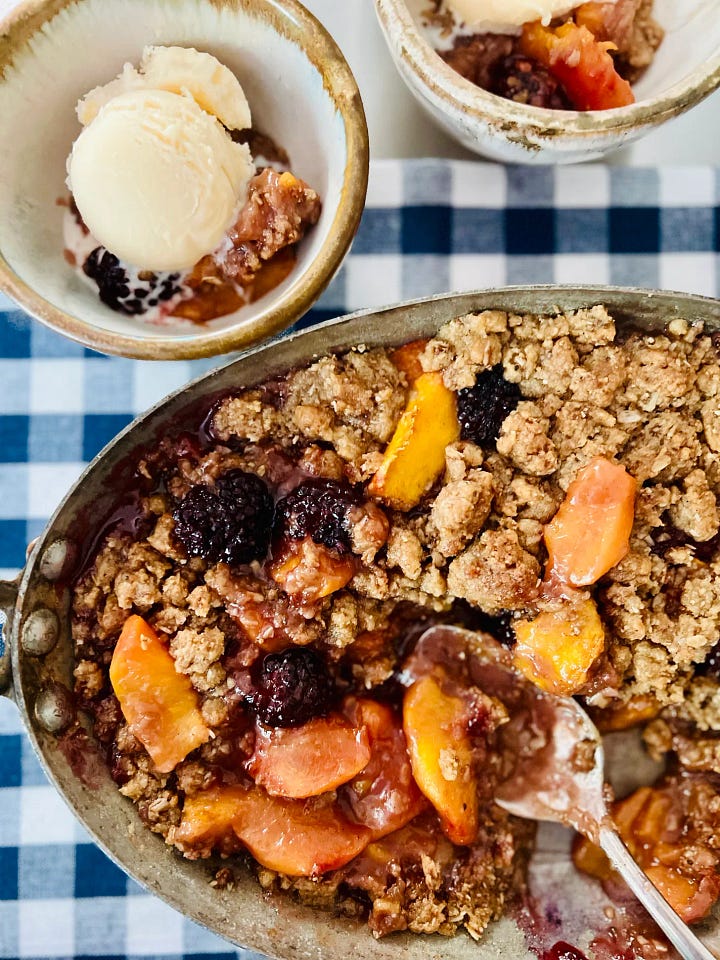
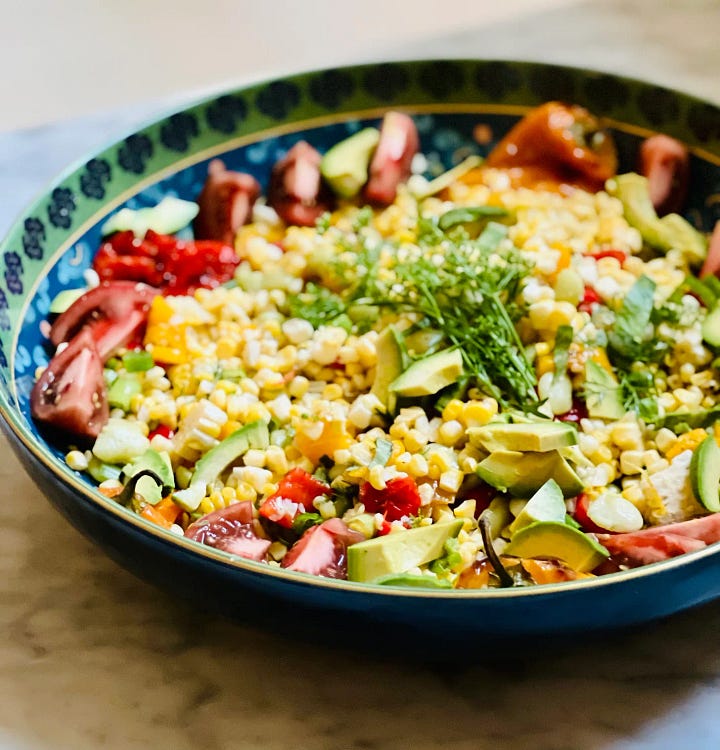

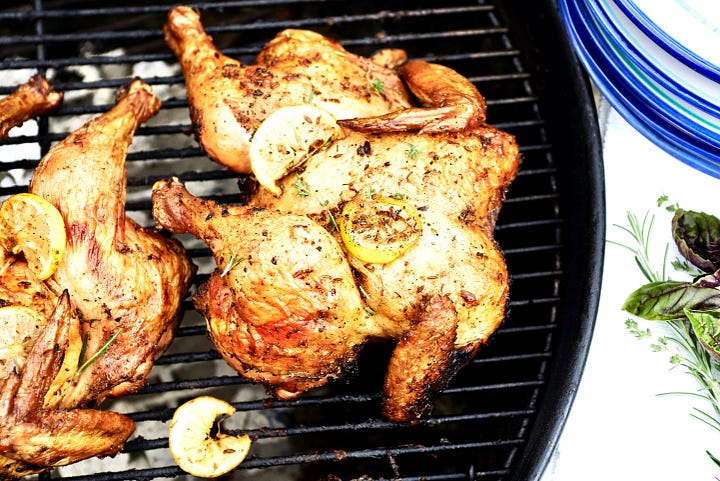
More Favorites for Memorial Day
Straight from the Between the Layers archives, these recipes are what I pull out for summer parties. Note: If the recipes were published more than six months ago, they are paywalled and you will need to be a paid subscriber to access them.
My Favorite Sangria and Potato Salad
The Best Peach and Blackberry Crumble
THE RECIPES:
Tres Leches Cake from Scratch
Depending on the look you want, bake this really basic cake in a 13-by 9-inch pan or a springform (for ease). After it has absorbed the milk syrup mixture, top it with whipped cream and berries. Feel free to flavor the milk syrup as you choose, adding a little coconut or almond extract if you like.
Makes: 12 to 16 servings
Prep: 45 to 50 minutes
Bake: 20 to 25 minutes
Chill: 2 hours or overnight
Cake:
Vegetable oil spray or soft butter for greasing the pan
1/2 cup (1 stick) unsalted butter, at room temperature
1 cup (200 grams) granulated sugar
4 large eggs
1/2 teaspoon vanilla extract
1 1/2 cups (180 grams) all-purpose flour
1 teaspoon baking powder
1/4 teaspoon salt
Milk Syrup:
1 cup whole milk
1 cup evaporated milk
1 cup sweetened condensed milk
3 tablespoons rum (optional)
1 teaspoon vanilla extract
Whipped Cream:
1 cup heavy cream
1 tablespoon granulated sugar
Garnish:
Sliced fresh strawberries, peaches, or berries
1. Place a rack in the center of the oven, and preheat the oven to 350ºF. Lightly grease a 13- by 9-inch baking pan (or a 9- to 10-inch springform) with the vegetable oil spray or soft butter. Set the pan aside.
2. Place the butter and sugar in a large mixing bowl and beat on medium speed with an electric mixer until the mixture is light and fluffy, 1 to 2 minutes. Add the eggs, one at a time, beating about 15 seconds after each egg. Blend in the vanilla, and set the batter aside.
3. Sift the flour, baking powder, and salt into a small bowl. Add the flour mixture to the batter about 2 tablespoons at a time, blending on low speed after each addition. Pour the batter into the prepared pan, and place the pan in the oven.
4. Bake the cake until the top springs back when lightly pressed with a finger, and a toothpick inserted comes out clean, 20 to 25 minutes for the 13- by 9-inch pan and about 40 minutes for the springform. Remove the cake to a wire rack, and poke holes on the top of the cake with a fork, chopstick, or wooden skewer. Let the cake cool 15 minutes.
5. Meanwhile make the milk syrup. Pour the milks, rum, if desired, and vanilla into a medium-size bowl. Spoon the syrup over the top of the cake, letting it soak into the holes of the cake. Cover the cake with plastic wrap, and place it in the refrigerator to chill 2 hours.
6. Chill the heavy cream and the beaters for the electric mixer. When cold, pour the cream and sugar into a large mixing bowl and beat on high speed until stiff peaks form. Remove the cake from the refrigerator and spread the whipped cream evenly over the top. Return the cake, covered, to the refrigerator until time to serve.
7. To serve, cut into squares or spoon into bowls, and top with fresh strawberries, if desired.
Tres Leches Cake Using a Cake Mix
One spring our moms’ group was gathering for a birthday dinner, and I was asked to bring dessert. I not only needed to jazz up the appearance of the rather staid looking tres leches cake but also make it dazzle. Thus the shortcut using a mix, and the drama of piling the top and sides with whipped cream and adding lots of berries. We lit the candles, sang ‘’Happy Birthday,’’ and dug in.
Makes: 12 servings
Prep: 20 to 25 minutes
Bake: 35 to 40 minutes
Chill: 2 hours or overnight
Cake:
Vegetable oil spray for misting the pan
1 package (15.25 ounces) yellow or butter-recipe cake mix
4 tablespoons vanilla instant pudding mix
3 large eggs
1 cup whole milk
2/3 cup vegetable oil
1 tablespoon vanilla extract
Milk syrup and topping:
1 cup sweetened condensed milk
1 cup evaporated milk
1 cup heavy cream (or whole milk)
1 teaspoon vanilla extract
2 cups lightly sweetened whipped cream
2 cups sliced lightly sweetened strawberries, blueberries, and blackberries
Place a rack in the center of the oven, and preheat the oven to 350ºF. Lightly grease a 9- or 10-inch springform with the vegetable oil spray. Set the pan aside.
Place the cake mix, pudding mix, eggs, milk, oil, and vanilla in a large mixing bowl. Beat with an electric mixer on low speed until combined, 1 minute. Stop the machine and scrape down the sides o the bowl. Increase the speed to medium and beat 2 minutes more, or until smooth. Turn the batter into the pan, smoothing the top. Place the pan on a large baking sheet in the oven and bake until golden brown, about 35 to 40 minutes. Let cool on the baking sheet 1 hour.
Meanwhile, make the milk syrup: Whisk together the sweetened condensed milk, evaporated milk, cream, and vanilla in a medium bowl. When the cake is cool, poke holes over the top with a fork, chopstick, or wooden skewer. Keep the cake in the pan on the baking sheet. Spoon the milk syrup over the top of the cake until you have used it all up. This can be done in increments, or if you have little time, pour as much as you can over the top of the cake, cover with plastic wrap, and place in the fridge. Once the syrup has settled into the cake, add more. Chill until the syrup is absorbed, at least 2 hours, preferably overnight.
To finish the cake, remove the outside rim of the springform pan. Place the cake on a serving plate with the base of the pan still attached. Spread the top and sides with whipped cream and garnish with berries.

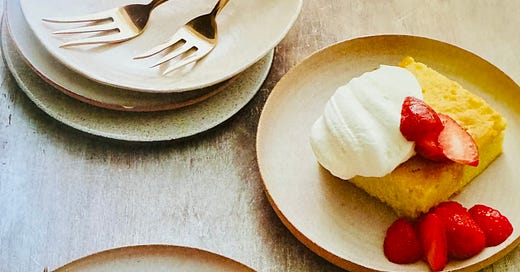



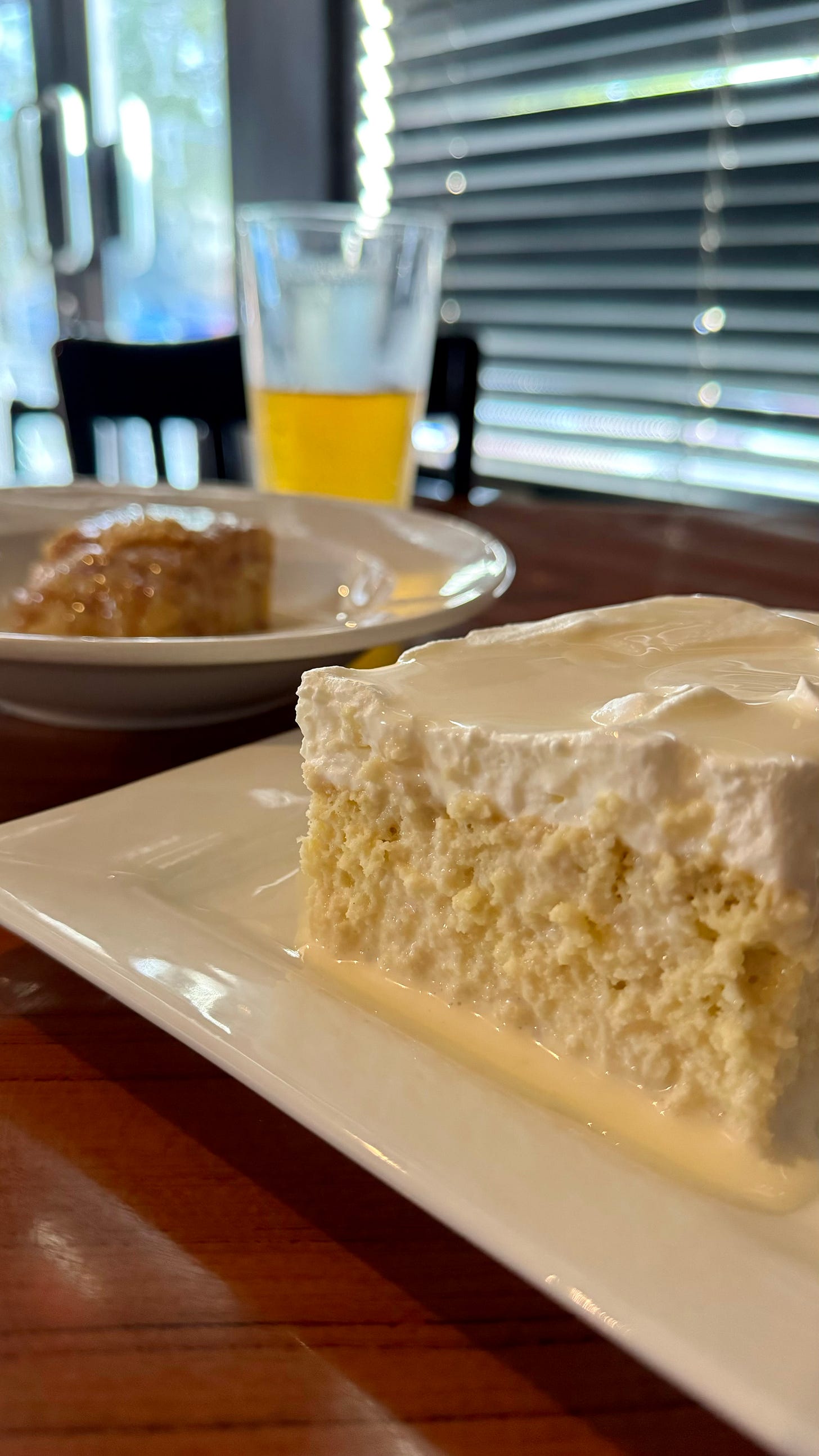
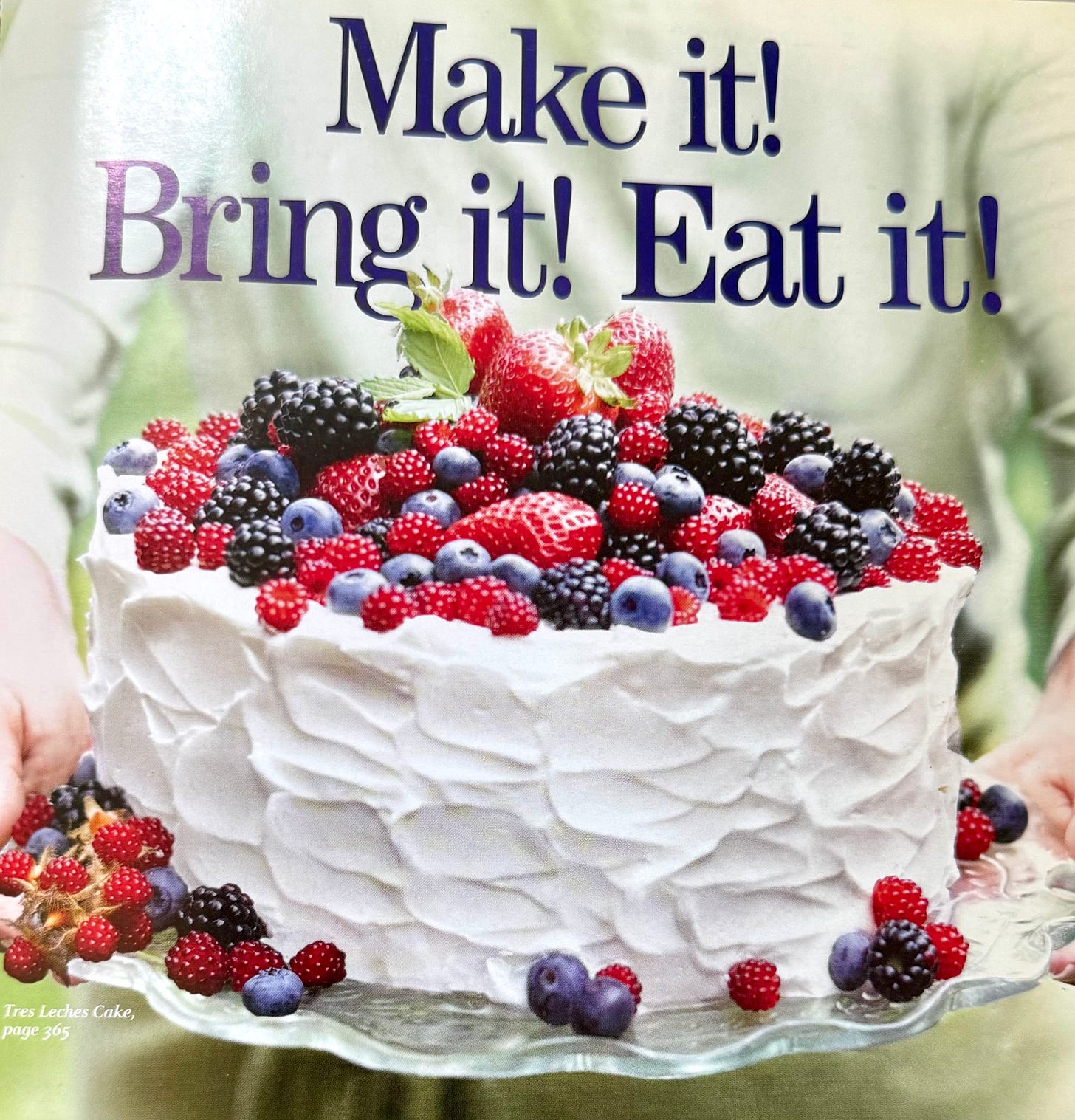


Thank you so much for your clear and important comments on issues we are facing today in this country. Your words are so true and compelling.
And thank you for the recipes. I have made a Tres Leches Cake (once) many years ago and remember it being very rich and very good.
Anne, thanks as always for writing about what all (or most of us anyway) are feeling. Except Native Americans, we’re all descendants of immigrants here. My father and his family were refugees from the Nazis and thankfully didn’t have to give up their Judaism or hide their identity to become U.S. citizens and give that gift to their children. What’s going on is a horror and a shanda—a shame—as we would say. Thanks for speaking out and for this recipe and so many others to celebrate a day that should honor what’s best about this country, including its compassion for those seeking a better life.